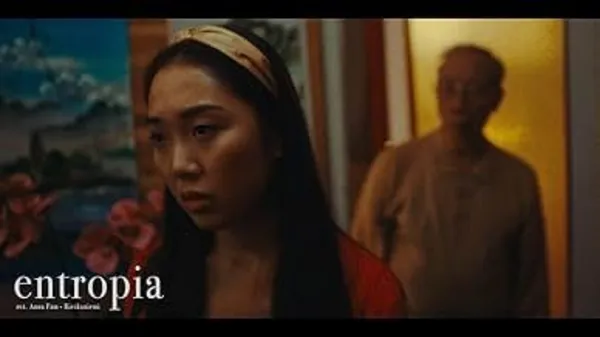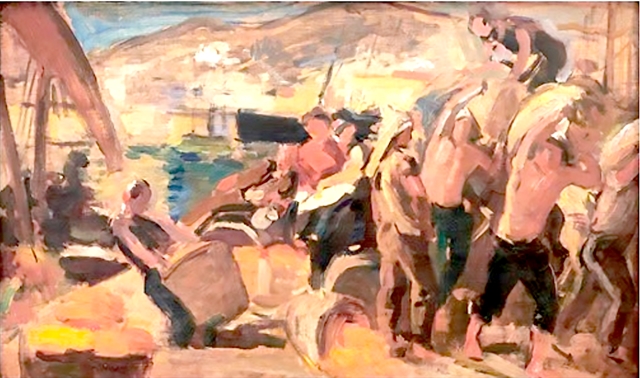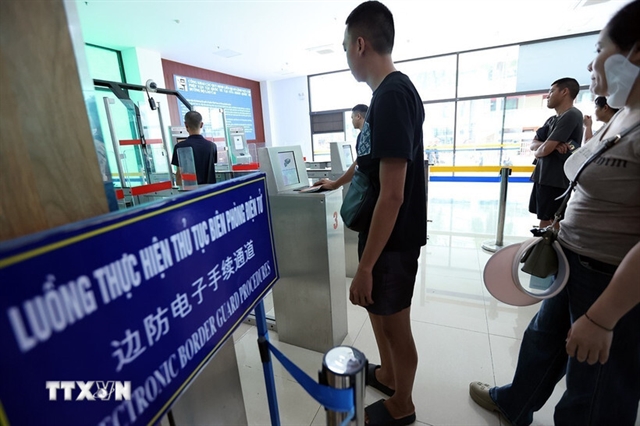 Life & Style
Life & Style
.jpg)

|
| 'Những Người Công Nhân Bến Cảng' (The Dock Workers), an oil on canvas, 1902-1904, by Victor Tardieu, the first Principal of the VNUFA. The work is part of a collection by the A&V Foundation. Photo courtesy of the VNUFA |
HÀ NỘI — Brushstrokes of history come together this week as a special exhibition opens at the Việt Nam National Fine Arts Museum (VNFAM) in the centre of Hà Nội, showcasing 150 artworks from collections of the Việt Nam University of Fine Arts (VNUFA) and the museum.
As part of a series of activities celebrating the 100th anniversary of the VNUFA, the university in collaboration with the museum organises the exhibition titled '100 Years of Modern Fine Arts – Collections of the Việt Nam University of Fine Arts and the Việt Nam National Fine Arts Museum.'
This marks the first time in 100 years of formation and development that the artworks of lecturers and students spanning generations, from the time of the Indochina School of Fine Arts (ISFA) to the VNUFA today, have been brought together in a single exhibition, according to a statement from the exhibition's organising board.
The exhibition, which is scheduled to take place across the two floors of the museum at 66 Nguyễn Thái Học Street, Hà Nội from November 14 to November 22, stands as a key event in the programme celebrating the centenary of the VNUFA.
It offers the public a new perspective on modern Vietnamese art, tracing the artistic education journey through the creative works of students from secondary to master’s level, as well as those of faculty members from various periods, all preserved in the university's and museum's collections.

|
| 'Thu Hoạch Dứa' (Pineapple Harvest'), a lacquer painting by Ca Lê Thắng created in 1976. The work is part off a collection of the VNUFA. Photo courtesy of the VNUFA |
The artists, through their creations, collectively generate the sweet harmonies of colour and form, of emotion, intellect, and the pioneering spirit that shaped modern Vietnamese fine arts deeply imbued with national identity, the statement said.
The artworks displayed at the event include paintings, sculptures and reliefs as well as contributions from the A&V Foundation and the family of the late artist Ngô Mạnh Lân. They are characterised by diversity in media and richness in form, collectively narrating the most complete story possible of the university's educational journey.
Most of the paintings and sculptures from the university’s and museum’s collections on display at the event have rarely or never been publicly exhibited.
The organisers hope that the exhibition will offer fascinating and engaging experiences and establish a 'fresh perspective on the genesis of modern Vietnamese fine arts' – a viewpoint linking the university and the museum. Furthermore, it is anticipated to evoke beautiful memories for the generations of lecturers and students who have traversed this journey.
Since the opening of its first course in November 1925, the Indochina School of Fine Arts, now the VNUFA and a pioneering institution of academic art training in Indochina, has become the cradle of generations of talented artists and researchers who have made significant contributions to the formation of modern Vietnamese fine arts.
The history of art education at the VNUFA can be divided into two significant periods: 1925-1945 and from 1945 to the present, each marked by distinct sub-phases. Every period bears its own characteristics, closely connected to the historical, social and ideological context of the nation.
Across both periods: 1925-1945 and 1945 to the present, the school’s curriculum has been continuously refined to reflect artistic progress, respond to social needs and meet the challenges of each historical moment. This enduring continuity underscores the inseparable bond between École des Beaux-Arts de l’Indochine (ISFA) and the VNUFA. It also highlights their central role in shaping modern Vietnamese fine arts and their dedication to serving the nation over a century-long journey.
In 1955, the school returned to its historic address at 42 Yết Kiêu Street, opening a new chapter with the class named after Tô Ngọc Vân, in tribute to the artist, rector and educator who devoted his life to teaching, creation and the advancement of modern Vietnamese art.
Over time, the institution has carried several names: Việt Nam College of Fine Arts (1955–1981), Hà Nội University of Fine Arts (1981–2008), and the Việt Nam University of Fine Arts since 2008. — OVIETNAM/VNS
.jpg)



